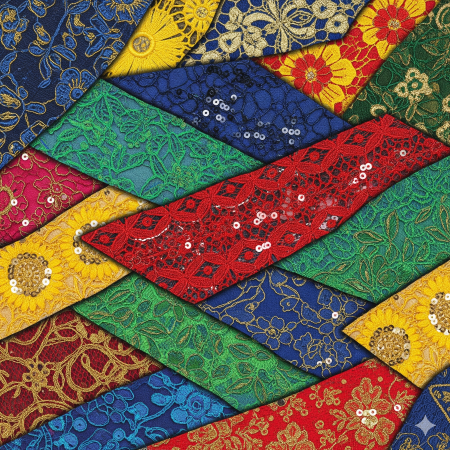Discipline or Discrimination? The War on 4C Hair in African Schools
.png)
Do you remember how many times you were reprimanded in school for not cutting your hair, or for leaving your suku hairstyle for more than seven days?
If you do, you’re not alone. For many African students, especially girls, school wasn't just a place of learning. It was also a place where your natural hair was scrutinized, policed, and, at times, punished.
No one ever explained why. They just called it neat. Said it was part of discipline. A matter of school policy.
But what if those rules, meant to promote order, are actually harming African hair? What if the system is quietly breaking something it never even tried to understand?
Hair Rules That Hurt
For decades, school rules have quietly undermined the natural growth and health of 4C hair—the most common hair type among Africans.
In many schools, students are told to cut their hair short. If that’s not the rule, then they’re told to braid it tightly and switch styles regularly.
These might seem like small decisions made by school boards or headteachers. But for students with tightly coiled, fragile hair, the consequences are long-term.
Tight braids, frequent manipulation, and constant head shaving, weaken the hair shaft and stress the scalp. Weekly style changes require undoing and redoing hair constantly, which leads to breakage.
Cutting hair too often, especially in a standardized way across entire schools, disregards individual hair needs and growth patterns.
Instead of helping students focus, these rules quietly reinforce the idea that their natural hair is something to control rather than care for.
The Relaxer Chapter Everyone Forgets
Many African girls can remember the first time they relaxed their hair. It probably wasn’t for a wedding or a photo shoot. Often, it was just to get ready for school — because hairdressers didn’t want to deal with natural hair, or because an aunt or mother insisted it was too tough to keep braiding every weekend.
Managing natural hair in an environment where you were punished for “unkempt” styles became too hard. And so the poisonous cream came in, burning scalps, changing textures, and leaving behind damage that could last years.
Relaxers thin out the hair, make it more prone to breakage, and often cause permanent texture loss. When applied at an early age, before students understand proper hair care, the damage is worse. Instead of learning to work with their hair, many students are taught to fight it, to change it, to silence it. This is not discipline. This is erasure, unintentionally written into the school handbook.
What 4C Hair Actually Needs
Image Credit: Pinterest
So what does 4C hair need? The truth is, African hair is unique in structure and care. It is beautiful, yes, but also delicate. Without the right care, it breaks easily. And the rules most schools enforce do the opposite of what 4C hair needs.
First, 4C hair thrives when it is left alone. Constant styling and manipulation weaken the strands. Protective styles like bantu knots and loose twists are great options because they help the hair retain moisture while reducing stress on the scalp. These styles can last for weeks if maintained properly and don’t require the hair to be pulled tight.
Second, 4C hair needs moisture, but not just water. In fact, over-wetting the hair too often, without sealing in that moisture, can lead to hygral fatigue. This happens when hair swells and shrinks from repeated exposure to water, weakening it from the inside out.
To avoid this, many natural hair enthusiasts follow theLCO or LOC method: apply a liquid (like aloe-vera or a water-based leave-in conditioner), followed by a hair cream, and then an oil to seal in the moisture.
African hair doesn’t distribute the scalp’s natural oils down the strand as easily as straighter hair types do. That’s why applying oils manually makes a huge difference.
Thick oils like castor oil, olive oil, and shea butter help seal moisture and protect the hair from dryness. Shea butter, in particular, is excellent for creating a barrier around the hair, keeping it soft and moisturized for longer.
Strength Over Strain
Image Credit: Pinterest
There are also treatments that help strengthen the hair naturally. Chebe powder, a traditional hair care ingredient from parts of Africa, has been used for generations to keep hair long and strong. When mixed with oils and applied to the hair, it helps reduce shedding and retain length.
Similarly, egg masks provide protein, which reinforces weak strands and helps prevent breakage.
But the most powerful care tip is this: less is more. The fewer times you comb, tug, or pull at your hair, the better. And yet, in school environments, the opposite is expected. Weekly changes. Constant rebraiding. Uniform styles. Little room for health, flexibility, or individuality.
It’s Time Schools Got This Right
The current grooming policies in schools were likely created without malicious intent. They were meant to instill order and discipline. But intention does not cancel out impact. For millions of African students, the impact has been hair damage, painful relaxers, and a disconnection from their natural identity.
What would it look like if schools allowed students to wear low-manipulation protective styles that lasted multiple weeks? What if the rule wasn’t “cut your hair” but “care for your hair”? What if grooming policies included education on proper hair care, designed around the actual needs of 4C hair?
Reforming these rules won’t disrupt learning. In fact, it might do the opposite. When students feel respected, when they are allowed to embrace their natural selves without fear of punishment or shame, they are at peace, and they learn better.
The very problem schools attribute to 4C hair is the one they create — by imposing rigid expectations that breed stress, scrutiny, and a constant fear of not measuring up.
You may also like...
Super Eagles' Shocking Defeat: Egypt Sinks Nigeria 2-1 in AFCON 2025 Warm-Up

Nigeria's Super Eagles suffered a 2-1 defeat to Egypt in their only preparatory friendly for the 2025 Africa Cup of Nati...
Knicks Reign Supreme! New York Defeats Spurs to Claim Coveted 2025 NBA Cup

The New York Knicks secured the 2025 Emirates NBA Cup title with a 124-113 comeback victory over the San Antonio Spurs i...
Warner Bros. Discovery's Acquisition Saga: Paramount Deal Hits Rocky Shores Amid Rival Bids!

Hollywood's intense studio battle for Warner Bros. Discovery concluded as the WBD board formally rejected Paramount Skyd...
Music World Mourns: Beloved DJ Warras Brutally Murdered in Johannesburg

DJ Warras, also known as Warrick Stock, was fatally shot in Johannesburg's CBD, adding to a concerning string of murders...
Palm Royale Showrunner Dishes on 'Much Darker' Season 2 Death

"Palm Royale" Season 2, Episode 6, introduces a shocking twin twist, with Kristen Wiig playing both Maxine and her long-...
World Cup Fiasco: DR Congo Faces Eligibility Probe, Sparks 'Back Door' Accusations from Nigeria

The NFF has petitioned FIFA over DR Congo's alleged use of ineligible players in the 2026 World Cup playoffs, potentiall...
Trump's Travel Ban Fallout: African Nations Hit Hard by US Restrictions

The Trump administration has significantly expanded its travel restrictions, imposing new partial bans on countries like...
Shocking Oversight: Super-Fit Runner Dies After Heart Attack Symptoms Dismissed as Heartburn

The family of Kristian Hudson, a 'super-fit' 42-year-old marathon runner, is seeking accountability from NHS staff after...






